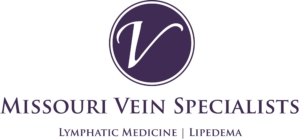Vein Disease Symptoms
Vein disease can be an invisible, progressive disease with symptoms that affect your quality of life to visible signs of disease.
In some cases, the only vein disease symptom is in the appearance of the affected veins. Other patients may not have visible varicose veins, but experience some of the other uncomfortable symptoms listed. When symptoms appear, it usually means the vein condition is becoming more severe and should be evaluated by a qualified vein specialist. At Missouri Vein Specialists in Kansas City, MO we wish to return you to your active lifestyle through resolving your symptoms.
- Legs that fatigue easily.
- Achy legs.
- Swelling or heaviness in the lower legs
- Itching or burning around the affected vein.
- Restless leg symptoms or cramping.
- The appearance of spider or varicose veins.
- Persistent, irritating rash on the leg.
- Changes in skin color or appearance of open skin sores.
- Peripheral neuropathy or numbness and tingling in the feet and ankle area.
- Loss of skin texture of underlying tissue around the ankle.
Peripheral Neuropathy
Painful neuropathy is often a complication of Diabetes but can also be from Chronic Venous Insufficiency independent of Diabetes or they can be co-existing causes. Veins travel down the leg with peripheral nerves and arteries. If a vein increases in diameter due to the backwards flow of blood in the leg from Chronic Venous Insufficiency, it will cause pressure or traction on peripheral nerves running next to the vein causing an injury pattern with symptoms of tingling, burning, hyperesthesia, loss of sensation and loss of balance.
Until recently, the only known relief for the symptoms of painful diabetic neuropathy were a variety of pharmaceutical agents from different medicinal categories. However selecting an agent is often challenging given the breadth of choices and lack of consistent guidelines. As a result, many patients remain untreated or under treated, with continuous suffering.
Chronic Venous Insufficiency
Chronic Venous Insufficiency is a significant, but also silent disease, often associated with Diabetic Foot Neuropathy. Chronic Venous Insufficiency (CVI) is a medical condition where the veins cannot pump enough oxygen-poor blood back to the heart, due to damaged or “incompetent” valves. Ordinarily, women make up the largest demographic for this problem, as it is present in 70% of women. Risk factors for CVI include family history,genetics, gender, age, number of pregnancies, and jobs requiring long periods of standing. The incidence of CVI non additives is 8%.
A recent study was performed by Dr. Doohi Lee, to find the incidence of Chronic Superficial Venous Insufficiency and it’s prevalence, and the effects of Endovenous Ablation treatments in patients with Diabetic Foot Neuropathy. The study found that 73% of patients with diabetic-related nerve abnormalities had an accompanying vascular abnormality. He also found that diabetic patients suffering with clinical symptoms of foot neuropathy, but who did not present with nerve pathology by Ultrasound, also had a significant occurrence of reflux. Combined with the diabetic group that had diagnosed nerve abnormalities, 87% of the diabetic population in the study had Chronic Venous Insufficiency (aka Venous Reflux) in the Saphenous System, regardless of the abnormality of the nerve. In conclusion, the occurrence of CVI in patients with diabetes is 10 times higher than the occurrence in the general population.
The results for diabetic patients after treatment of CVI with Endovenous Laser Ablation, revealed a marked decrease in pain: 58% showed 40% improvement; 22% showed 50% improvement; 7% showed 60%improvement; 1% showed 70% improvement; and 12% showed a decrease of <4%.
Why the High Incidence of CVI in patients with Diabetic Foot Neuropathy? The decrease in calf muscle pump due to neuropathic changes causes muscle weakness. The role of progressive venous insufficiency caused by incompetent valves in diabetics with abnormalities of Saphenous Veins and Perforators present, causes a constant recirculation of venous flow into the Tibial veins and which leads to Hydrostatic compression of the Tibial nerve.
Patients present with clinical signs of Chronic Neuropathic abnormalities and skin changes, but they are actually made up of the venous abnormality. Peri-neural venous congestion occurs because these patients have very prominent, enlarged Tibial Veins next to the Tibial nerve that occurs because of the abnormality of the venous reflux. Sometimes multiple veins, tortuous veins and venous aneurysms can cause compression of an already enlarged and compressed nerve that is compounded by the Hydrostatic pressure of a dilated vein. The best treatment option is Endovenous Laser Ablation (EVLA). Learn more about how we treat vein disease.
Visit Missouri Vein Specialists in Kansas City if You Have Vein Disease Symptoms
If you are experiencing any vein disease symptoms schedule a vein consultation with the best vein doctor in KC today by calling 816-792-3400 or use our online form and we will contact you.


